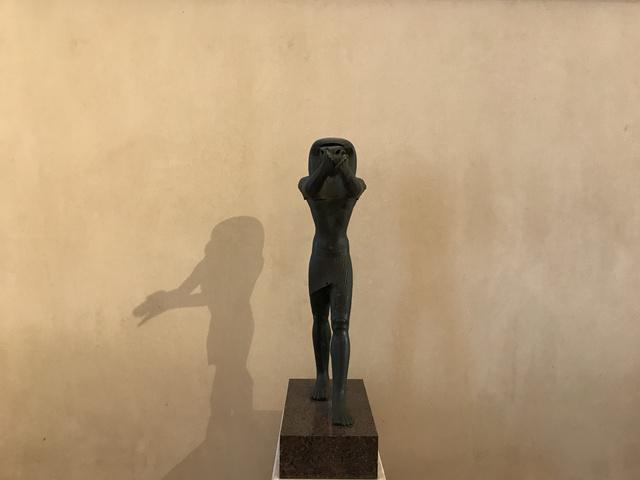Louvre
Don't miss anything
Horus
Originally, this bronze statue of the god Horus was covered with precious materials, a golden plaster or gold plated to evoke the rotten flesh of the gods and incrustations of glass or earthenware. These different comforts masked the assemblies of the different parts melted with the lost wax. In the absence of text, style and technique have been used to date the work, probably dating back to the Third Intermediate Period.
This statue representing the god Horus in its hybrid form of a man with a falcon's head was probably part of a scene with three characters: Horus and Thoth framing the king and pouring over him the purification of the lustration. In his raised hands, Horus held the vase, now gone, containing the water of the ritual.
The statue, fused with lost wax in several tight pieces, is hollow, emptied of its clay core. The incrustations of glass paste or colored mud filled the orbit of his eyes, the locks of the wig and the folds of the loincloth. The granular appearance of the metal's surface suggests that the naked parts of the body were covered with a layer of gold that evoked the rotten flesh of the gods.
The appearance of the character is quite representative of the canons of the Third Intermediate Period: the silhouette is powerful, thin and slender, the long bust with high pectorals placed and narrow waist. It is stable, on long legs with the musculature carefully modeled.
During this period, Egyptian bronze masters easily mastered all the techniques of their art. This statue of Horus is one of the biggest jewels.




